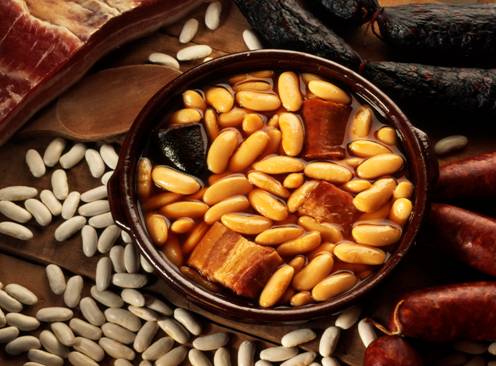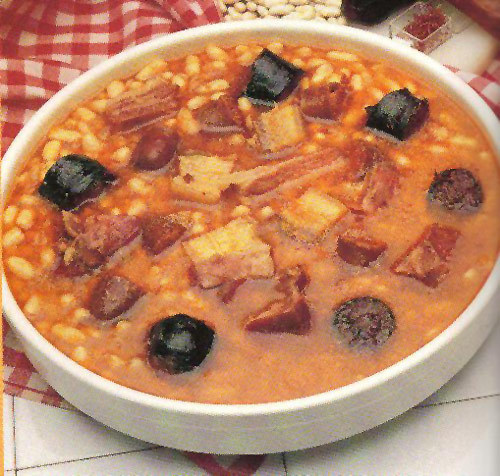
Origin: Asturias

Fabada asturiana or simply fabada, is originally from the northern Spanish region of Asturias. However its consumption has spread all over Spain and is recognized as one of the most important dishes of the Spanish cuisine par excellence. It is therefore definitely one of the dishes to look out for when you visit Spain.
Fabada asturiana is made with fabes (white beans in Asturian), several types of sausages and pork, as well as spices such as saffron. These extra ingredients are often called the 'compango'. It's so popular that several brands of processed food have it in their catalogues and sold in cans in supermarkets. It's a highly caloric dish and most consumed during winter.
We have some records of of fabes, or white beans in Asturias that go back to the 16th century, though its consumption is perhaps earlier than that. Like many other examples of Spanish food, fabada asturiana has rather humble origins as it was the poorer people of Spain who would mix fabes with any meat leftovers that they had.
Some historians claim that fabada already existed in the 17th century, however there are no documents that confirm this theory. Even though fabes is mainly a rural ingredient, and was in fact cultivated in large amounts, it is believed that the dish fabada asturiana was actually created in the cities.
Some say it is similar to cassoulet from Languedoc in France that likely entered Spain though the French that took Camino de Santiago (Way of Saint James) during the middle ages.
However the first written references there are of fabada asturiana dates back to 1884. Other authors say that fabada appeared in an undetermined period between the 19th and 20th century.
Fabada asturiana has a simple preparation, it uses inexpensive and easy to find ingredients and it's a potent caloric source perfect for the coldest winter months, however it is not easy.
With all of these great dishes from Spanish cuisine, the best version is one that is made at home which you can do by following the recipe below. However, in modern times, the production of fabada asturiana has become commericialised and you can now buy the dish pre-made in tins in your Spanish supermarket.

Ingredients (6 portions):
Preparation: